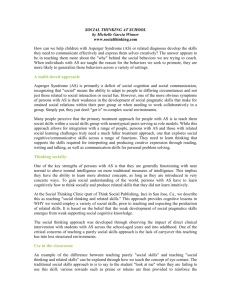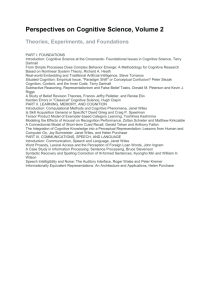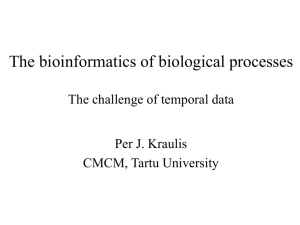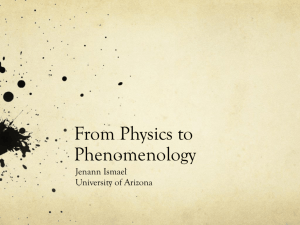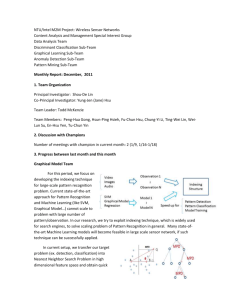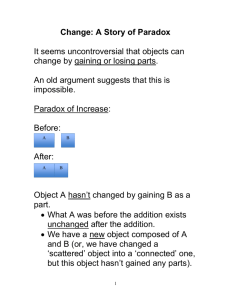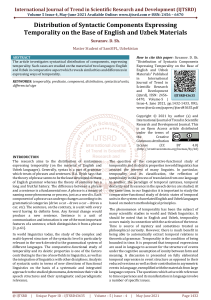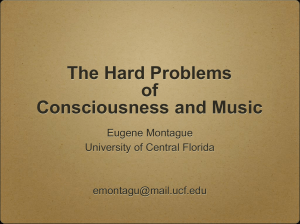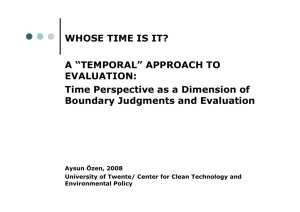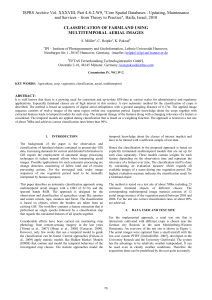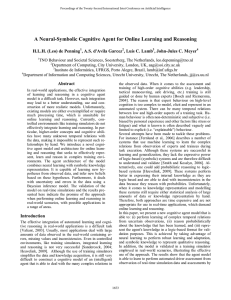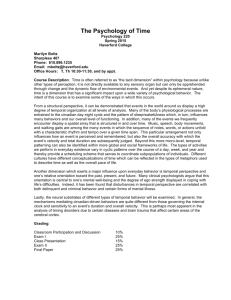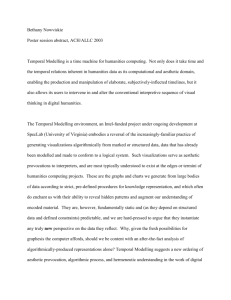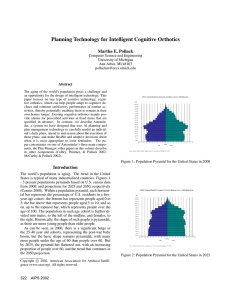The Structure of Time
advertisement
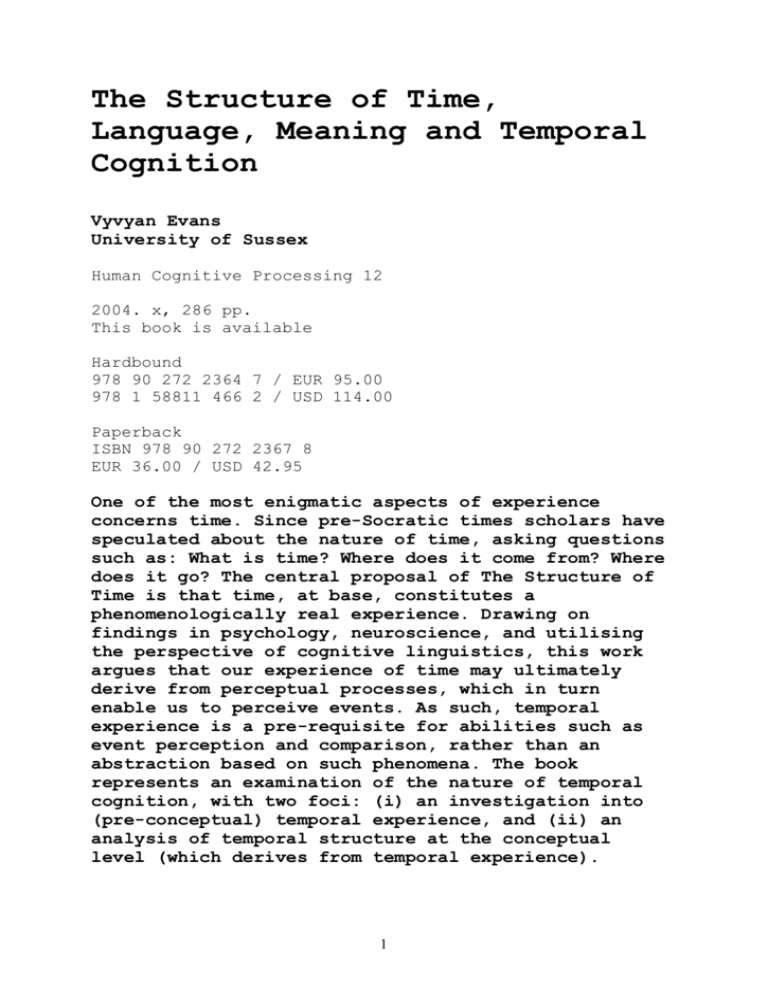
The Structure of Time, Language, Meaning and Temporal Cognition Vyvyan Evans University of Sussex Human Cognitive Processing 12 2004. x, 286 pp. This book is available Hardbound 978 90 272 2364 7 / EUR 95.00 978 1 58811 466 2 / USD 114.00 Paperback ISBN 978 90 272 2367 8 EUR 36.00 / USD 42.95 One of the most enigmatic aspects of experience concerns time. Since pre-Socratic times scholars have speculated about the nature of time, asking questions such as: What is time? Where does it come from? Where does it go? The central proposal of The Structure of Time is that time, at base, constitutes a phenomenologically real experience. Drawing on findings in psychology, neuroscience, and utilising the perspective of cognitive linguistics, this work argues that our experience of time may ultimately derive from perceptual processes, which in turn enable us to perceive events. As such, temporal experience is a pre-requisite for abilities such as event perception and comparison, rather than an abstraction based on such phenomena. The book represents an examination of the nature of temporal cognition, with two foci: (i) an investigation into (pre-conceptual) temporal experience, and (ii) an analysis of temporal structure at the conceptual level (which derives from temporal experience). 1 Published by John Benjamins Publishing Company, www.benjamins.com/jbp. Table of contents Acknowledgements ix I. Orientation 1. The problem of time 3–11 2. The phenomenology of time 13–32 3. The elaboration of temporal concepts 33–37 4. The nature of meaning 39–56 5. The conceptual metaphor approach to time 57–77 6. A theory of word-meaning: Principled polysemy 79–104 II. Concepts for time 7. The Duration Sense 107–121 8. The Moment Sense 123–130 9. The Instance Sense 131–134 10. The Event Sense 135–140 11. The Matrix Sense 141–157 12. The Agentive Sense 159–167 13. The Measurement-system Sense 169–176 2 14. The Commodity Sense 177–183 15. The Present, Past and Future 185–198 III. Models for time 16. Time, motion and agency 201–210 17. Two complex cognitive models of temporality 211–226 18. A third complex model of temporality 227–236 19. Time in modern physics 237–249 20. The structure of time 251–254 Notes 255 References 269 Index 277 3 “Time belongs to the bedrock of human cognition. Beginning before birth and remaining for the most part below the horizon of consciousness, temporal cognition is a mystery not easily penetrated. The Structure of Time is an indispensable investigation, rich in theory and examples, into the phenomenology and the linguistics of the way we think about time.” Mark Turner, Institute Professor, Case Western Reserve University “With this work, Cognitive Linguistics finally turns its attention from Space to Time.” Jordan Zlatev, Lund University, Sweden “This work is interesting, creative, thought-provoking, and timely (no pun intended)” Wallace Chafe, University of California at Santa Barbara “[...] thought provoking and inspiring. It is a valuable interdisciplinary source for insight in several domains, including lexical semantics, conceptual metaphor theory, and cognitive science in the area of time.” Thora Tenbrink, University of Bremen, Germany, on Linguist List 15-2430 (2004) “In general, the style of the book is very accessible, especially in view of the fact that so many different fields are touched upon. The conclusions at the end of each chapter additionally contribute to the reader's comprehension. The book is therefore accessible not only to linguistics and cognitive scientists but to researchers from any field interested in the phenomenon of time.” Nadja Nesselhauf, Univeristy of Heidelberg, in Anglistik 16(1), 2005 4





